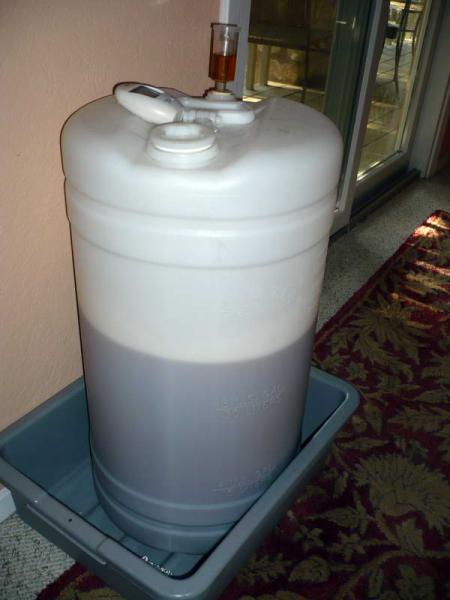one day they will have to explain to me why they only make a 5 and 6 gallon version.
A nice 7 gallon one would make my day.
Cost of the mold and the machine.
Those molded PET bottles are most likely blow molded. Blow molding is done by dropping a parasin of molten polymer ( a tube shaped extrusion of hanging molten plastic) and clamping it between mold halves..
As the parasin falls the mold clam-shell halves come together pinching off the bottom and closing the top around the neck part of the mold. Into the center of the top is a tube through which air is blasted into the now closed parrasin which inflates it against the sides of the mold halves.
The limiting factors for such machinery are size, weight, and the limits of the polymer parasin to remain in a molten state while hanging the length needed to make the bottle. They can only fit a mold in that is so big. They can only handle mold halves that conform to the size and wright limits of the individual machine. The plastic starts cooling once it exits the extrusion die forming the tubular parasin. As it cools it loses the ability to conform to the mold. The longer the parasin the faster everything has to happen. The heavier the parasin the greater the potential that it will fall away from the extrusion die and simply fail to become a molded part falling to the factory floor.
Add to that the cost of molds running in the hundreds of thousands of dollars and you get a slam dunk guarantee that the companies who are willing to undertake the costs are also only going to tailor their capital expenditures closely to the products of which they sell a lot.
Some blow molders have generic shapes into which embossed and engraved plates can be inserted and swapped out to make bottles with different molded company names and logos on the bottles.
Looked at that way it's not hard to understand that unless the spring water companies start demanding larger capacity bottles that it just ain't going to happen.
Most all of the large Polyethylene vessels are rotationally molded. The roto molds are filled with a pre measured load of polymer pellets and then closed up and run through a huge oven that heats and melts the plastic allowing it to flow and stick to the sides of the molds as the molds are rotated in at least one axis and sometimes more than one like as they journey from the loading station through the oven and out again in something that resembles a demented carnival ride from hell along a chain driven rail of sorts.
Those molds are a lot cheaper to make as they can be fabbed up from sheet plate stock welded together and ground to finish the corners.





































![Craft A Brew - Safale S-04 Dry Yeast - Fermentis - English Ale Dry Yeast - For English and American Ales and Hard Apple Ciders - Ingredients for Home Brewing - Beer Making Supplies - [1 Pack]](https://m.media-amazon.com/images/I/41fVGNh6JfL._SL500_.jpg)




















